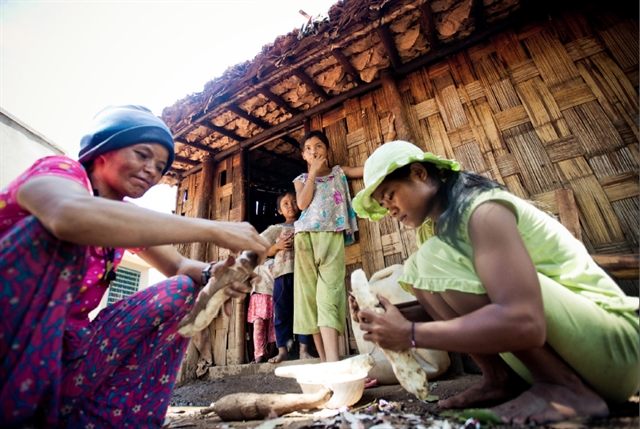 Society
Society

Việt Nam needs to solve persistent gender issues in ethnic minority communities that are affecting women and girls, according to reports conducted by a group of international organisations and local authorities.

|
| Female ethnic minority workers are more likely to undertake insecure jobs than their ethnic minority male and Kinh female counterparts. — Photo courtesy of UN Women Việt Nam |
HÀ NỘI — Việt Nam needs to solve persistent gender issues in ethnic minority communities that are affecting women and girls, according to reports conducted by a group of international organisations and local authorities.
The two reports, namely ‘Figures on Ethnic Minority Women and Men in Việt Nam 2015-2019’ and ‘Policy Brief: Gender issues in ethnic minority areas in Việt Nam’ were released yesterday for the International Day of the World’s Indigenous Peoples on August 9.
They were compiled by the United Nations Entity for Gender Equality and the Empowerment of Women (UN Women), with financial support from the Embassy of Ireland in Việt Nam, and in coordination with the Institute of Labour Science and Social Affairs under the Ministry of Labour, Invalids and Social Affairs (ILSSA-MOLISA), and the Department of Ethnic Minority Affairs - Committee for Ethnic Minority Affairs (CEMA).
The two publications cover information on ethnic minority women and men in Việt Nam from 2015 to 2019, including gender analysis outcomes and policy recommendations for gender equality promotion in ethnic minority areas.
The main topics covered in the reports include population; labour, employment and income; education and training; and health, environment, and sanitation.
Data from the report showed the positive results that the country has achieved in gender equality in ethnic minority and mountainous areas during this period.
The report showed that the average income per capita per month of ethnic minorities in 2018 increased by 1.8 times in four years and the average monthly income per capita of ethnic minority female-led households was always higher than that of their male counterparts.
The rate of ethnic minority people participating in health insurance reached 93.5 per cent with no difference between men and women.
While the overall rate of child and consanguineous marriage among the 53 ethnic minority groups has reduced, the extent of the reduction was uneven and has continued to increase among a number of ethnic minority groups.
Female ethnic minority workers are more likely to undertake insecure jobs and are more vulnerable in the workplace than their ethnic minority male and Kinh female counterparts, said the analysis.
The percentage of ethnic minority women aged 10-49 who give birth at health facilities reached 86.4 per cent compared to over 99 per cent of Kinh women.
“The gender gaps within and between the ethnic minority groups and the Kinh ethnic group remain substantive and persist across various socio-economic fields,” the report wrote.
“In ethnic groups, women and girl children are more disadvantaged than men and boy children in their access to various opportunities and resources and in their representation because social norms continue to reinforce their subordinate role, prioritising female reproductive roles, including childbearing and home-based production,” it said.
“The issues related to ethnic minorities, gender equality, and the empowerment of ethnic minority women require special attention in the advancement of women,” the report said.
Bùi Tôn Hiến, Director of ILSSA-MOLISA said, “In ethnic minority communities, women and girls are often more disadvantaged in accessing opportunities and resources due to social norms which impose an inferior position on them, limit their options when giving birth, and require them to take care of domestic work. The intersection of various forms of gender and ethnicity-based discrimination have the biggest impact.”
Elisa Fernandez Saenz, UN Women Representative in Việt Nam said that the objective of the reports is to provide stakeholders with a clearer picture of the current gender equality situation in ethnic minority areas in Việt Nam, wherein gender issues are being well addressed by the government, but which needs further effort for intervention in both areas of policy and programme.
She said “Gender equality issues which intersect with ethnicity are often difficult to tackle and require a comprehensive approach, as well as commitments to financial investment in the coming years.”
“These reports shall contribute to filling the gap of gender statistics among ethnic minority groups in Việt Nam, and to the progress of promoting socio-economic and sustainable development in ethnic minority areas,” she said.
According to the National Population and Housing Census, Việt Nam has a population of 96.2 million people, of whom, the Kinh ethnic group account for 85.3 per cent and the rest of the 53 ethnic groups account for 14.7 per cent as of April 2019.
As many as 86.2 per cent of ethnic minority people live in rural areas. — VNS




